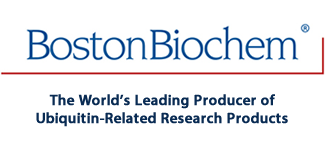
Recombinant Human Ubiquitin Mutant F4A Protein, CF Summary
Product Datasheets
Carrier Free
CF stands for Carrier Free (CF). We typically add Bovine Serum Albumin (BSA) as a carrier protein to our recombinant proteins.Adding a carrier protein enhances protein stability, increases shelf-life, and allows the recombinant protein to be stored at a more dilute concentration.The carrier free version does not contain BSA.
In general, we advise purchasing the recombinant protein with BSA for use in cell or tissue culture, or as an ELISA standard.In contrast, the carrier free protein is recommended for applications, in which the presence of BSA could interfere.
UM-F4A
| Formulation | Lyophilized from a solution of deionized water. |
| Reconstitution | Reconstitute at 10 mg/ml in aqueous buffer. |
| Shipping | The product is shipped at ambient temperature. Upon receipt, store it immediately at the temperature recommended below. |
| Stability & Storage: | Use a manual defrost freezer and avoid repeated freeze-thaw cycles.
|
Reconstitution Calculator
Background: Ubiquitin
Ubiquitin is a 76 amino acid (aa) protein that is ubiquitously expressed in all eukaryotic organisms. Ubiquitin is highly conserved with 96% aa sequence identity shared between human and yeast Ubiquitin, and 100% aa sequence identity shared between human and mouse Ubiquitin (1). In mammals, four Ubiquitin genes encode for two Ubiquitin-ribosomal fusion proteins and two poly-Ubiquitin proteins. Cleavage of the Ubiquitin precursors by deubiquitinating enzymes gives rise to identical Ubiquitin monomers each with a predicted molecular weight of 8.6 kDa. Conjugation of Ubiquitin to target proteins involves the formation of an isopeptide bond between the C-terminal glycine residue of Ubiquitin and a lysine residue in the target protein. This process of conjugation, referred to as ubiquitination or ubiquitylation, is a multi-step process that requires three enzymes: a Ubiquitin-activating (E1) enzyme, a Ubiquitin-conjugating (E2) enzyme, and a Ubiquitin ligase (E3). Ubiquitination is classically recognized as a mechanism to target proteins for degradation and as a result, Ubiquitin was originally named ATP-dependent Proteolysis Factor 1 (APF-1) (2,3). In addition to protein degradation, ubiquitination has been shown to mediate a variety of biological processes such as signal transduction, endocytosis, and post-endocytic sorting (4-7).
Ubiquitin has two functional surfaces which are critical for various signaling processes.The hydrophobic patch (Leu8, Ile44 and Val70) is important for binding to the proteasome, UIM (Ubiquitin interacting motif) and UBA (Ubiquitin associated) domains. This multifunctional surface thus influences many ubiquitination and deubiquitination reactions. The other surface defined by Phe4 is required specifically for non-proteasome-dependent functions such as endocytosis and internalization, which often involves mono-ubiquitination.It is thought that Phe4 may be involved in specific protein-protein interactions that facilitate endocytosis.In addition, Ile44 forms a di-leucine signal with Leu43 that may be involved in mediating endocytosis of substrate proteins that are mono-ubiquitinated.Ubiquitin F4A can form a Ubiquitin-activating (E1) enzyme-catalyzed active thioester at the C-terminus allowing the molecule to be transferred to the lysines of substrate proteins.
- Sharp, P.M. & W.-H. Li. (1987) Trends Ecol. Evol. 2:328.
- Ciechanover, A. et al. (1980 ) Proc. Natl. Acad. Sci. USA 77:1365.
- Hershko, A. et al. (1980) Proc. Natl. Acad. Sci. USA 77:1783.
- Greene, W. et al. (2012) PLoS Pathog. 8:e1002703.
- Tong, X. et al. (2012) J. Biol. Chem. 287:25280.
- Wei, W. et al. (2004) Nature 428:194.
- Wertz, I.E. et al. (2004) Nature 430:694.
FAQs
No product specific FAQs exist for this product, however you may
View all Proteins and Enzyme FAQsRecombinant Enzymes
Recombinant Human His6-USP7 Protein, CF
Recombinant Human His6UBE2S Protein, CF
Recombinant Human Isopeptidase T/USP5 Protein, CF
Recombinant Human Ubiquitin Activating Enzyme (UBE1), CF
Recombinant Human His6-UBE2N/UBE2V2 Complex Protein, CF
Recombinant Human His6-UAF1 Protein, CF
Recombinant Human UCH-L3 Protein, CF
Recombinant Human STAM-1 Protein, CF
Recombinant Human UBE2K/E2-25K Protein, CF
Reconstitution Buffers
Reconstitution Buffer 1 (PBS)
Reviews for Recombinant Human Ubiquitin Mutant F4A Protein, CF
There are currently no reviews for this product. Be the first toreview Recombinant Human Ubiquitin Mutant F4A Protein, CF and earn rewards!
Have you used Recombinant Human Ubiquitin Mutant F4A Protein, CF?
Submit a review and receive an Amazon gift card.
$25/€18/£15/$25CAN/¥75 Yuan/¥1250 Yen for a review with an image
$10/€7/£6/$10 CAD/¥70 Yuan/¥1110 Yen for a review without an image
ebiomall.com






>
>
>
>
>
>
>
>
>
>
>
>
转染技术的要点及转染试剂正确选择
转染技术是指将外源分子如DNA,RNA等导入真核细胞的技术,它是研究基因表达调控,突变分析等的常规工具。随着功能研究的兴起,其应用越来越广泛。以下就向大家介绍一些转染的技术要点及市面上主要的转染试剂类型的选择。
常规转染技术可分为两大类,一类是瞬时转染,一类是稳定转染(永久转染)。前者外源DNA/RNA不整合到宿主染色体中,因此一个宿主细胞中可存在多个拷贝数,产生高水平的表达,但通常只持续几天,多用于启动子和其它调控元件的分析。一般来说,超螺旋质粒DNA转染效率较高,在转染后24-96小时内(依赖于各种不同的构建)分析结果,常常用到一些报告系统如荧光蛋白,β半乳糖苷酶等来帮助检测。后者也称稳定转染,外源DNA既可以整合到宿主染色体中,也可能作为一种游离体(episome)存在。尽管线性DNA比超螺旋DNA转入量低但整合率高。外源DNA整合到染色体中概率很小,大约1/104转染细胞能整合,通常需要通过一些选择性标记,如来氨丙基转移酶(APH;新霉素抗性基因),潮霉素B磷酸转移酶(HPH),胸苷激酶(TK)等反复筛选,得到稳定转染的同源细胞系。
转染效率收多种因素影响,主要因素有下面几个:
1.细胞培养物
健康的细胞培养物是成功转染的基础。不同细胞有不同的培养基,血清和添加物。低的细胞代数(<50)能确保基因型不变。高的转染效率需要一定的细胞密度,一般的转染试剂都会有专门的说明。推荐在转染前24小时分细胞,这将提供正常细胞代谢,增加对外源DNA摄入的可能。一定要避免细菌,支原体或真菌的污染。
2.血清
大多数培养基在使用前需要加血清。胎牛血清(FCS)经常用到,便宜一点的有马或牛血清。通常的,血清是一种包含生长因子及其它辅助因子的不确切成分的添加物,对不同细胞的生长作用有很大的差别。血清质量的变化直接影响转染效率。因此在转染前建议先测(转右)试出对细胞生长良好的血清批号,转染时用同一批号的血清,并同时做负对照(不加转染试剂及外源DNA)以测试细胞生长是否正常。有些转染技术如脂质体转染在有血清存在情况下效率很低,因此在转染前要除血清。但有些对此敏感的细胞如原代细胞会受到损伤,甚至死亡导致转染效率极低。
3.载体构建
转染载体的构建(病毒载体,质粒DNA,RNA,PCR产物,寡核苷酸等)也影响转染结果。病毒载体对特定宿主细胞感染效率较高,但不同病毒载体有其特定的宿主,有的还要求特定的细胞周期,如逆转录病毒需侵染分裂期的宿主细胞,此外还需考虑一些安全问题(如基因污染)。除载体构建外,载体的形态及大小对转染效率也有不同的影响,如前面提到的超螺旋及线性DNA对瞬时和稳定转染的影响。如果基因产物对细胞有毒性作用,转染也很难进行,因此选择组成或可调控,强度合适的启动子也很重要,同时做空载体及其它基因的相同载体构建的转染正对照可排除毒性影响的干扰。
4.DNA质量
DNA质量对转染效率影响非常大。一般的转染技术(如脂质体等)基于电荷吸引原理,如果DNA不纯,如带少量的盐离子,蛋白,代谢物污染都会显著影响转染复合物的有效形成及转染的进行。核酸纯化世界第一品牌德国Qiagen公司提供的超纯质粒抽提试剂盒,能达到两倍2xCsCl梯度离心以上的纯度效果,使您不必为DNA质量操心。此外,对一些内毒素敏感的细胞(如原代细胞,悬浮细胞和造血细胞),QIAGEN还提供可去除内毒素污染的质粒抽提试剂盒,在质粒抽提过程中有效去除脂多糖分子,保证理想的转染效果。
5.转染技术
转染技术的选择对转染结果影响也很大,许多转染方法需要优化DNA与转染试剂比例,细胞数量,培养及检测时间等。一些传统的转染技术,如DEAE右旋糖苷法,磷酸钙法,电穿孔法,脂质体法各有利弊,其主要原理及应用特点见下:
转染方法原理应用特点
DEAE-右旋糖苷法
带正电的DEAE-右旋糖苷与核酸带负电的磷酸骨架相互作用形成的复合物被细胞内吞瞬时性转染相对简便、结果可重复但对细胞有一定的毒副作用,转染时需除血清
磷酸钙法
磷酸钙DNA复合物吸附细胞膜被细胞内吞稳定转染,瞬时性转染不适用于原代细胞,操作简便但重复性差,有些细胞不适用。
电穿孔法
高脉冲电压破坏细胞膜电位,DNA通过膜上形成的小孔导入稳定转染,瞬时性转染,所有细胞适用性广但细胞致死率高,DNA和细胞用量大,需根据不同细胞类型优化电穿孔实验条件
阳离子性的脂质体法
带正电的脂质体与核酸带负电的磷酸基团形成复合物被细胞内吞稳定转染
瞬时性转染,所有细胞适用性广,转染效率高,重复性好但转染时需除血清
转染效果随细胞类型变化大
病毒介导法
逆转录病毒通过侵染宿主细胞将外源基因整合到染色体中稳定转染,特定宿主细胞可用于难转染的细胞、原代细胞,体内细胞等,但携带基因不能太大
细胞需处分裂期,需考虑安全因素,腺病毒瞬时转染,特定宿主细胞可用于难转染的细胞,需考虑安全因素。
Biolistic颗粒传递法
将DNA用显微重金属颗粒沉淀,再将包被好的颗粒用弹道装置投射入细胞,DNA在胞内逐步释放,表达瞬时性转染可用于:人的表皮细胞,纤维原细胞,淋巴细胞系以及原代细胞
显微注射法
用显微操作将DNA直接注入靶细胞核稳定转染,瞬时性转染转染细胞数有限,多用于工程改造或转基因动物的胚胎细胞。
EntransterTM-R4000是英格恩生物(EngreenBiosystem)最新研发合成的针对siRNA、microRNA、mimic、inhibitor、mRNA和shRNA等RNA的转染试剂。EntransterTM-R4000不仅可以转染小RNA,而且针对mRNA等长链RNA优化。由于纳米技术的应用,EntransterTM-R4000能做到高达90%的转染效率和60-90%的沉默效率,对难转染细胞和原代细胞也非常适用。
先附上一篇英格恩生物RNA转染试剂转染mir-346至Jurkat细胞研究甲状腺的文献,以供参考。
RNA转染试剂转染Mir-346至Jurkat细胞研究甲状腺.pdf(5947.72k)
对重复性要求不高的试验,一般没有问题的,只不过可能需要增加一些转染试剂用量了。
为了避免这个问题,推荐收到货之后,进行适当分装,用多少,拿出来多少最好。
当然,如果考虑成本这块的话,义翘sinofection可以考虑哦~
如题,PolyplusTransfection转染试剂在中国区的代理商有哪些?求推荐1-2个靠谱的,谢谢!









